In this blog, we delve into the evolution of healthcare and wellness practices, exploring a variety of emerging trends for the future. We will uncover the reasons behind millennials’ inclination towards ‘self-care,’ investigate the integration of advanced robotics technology in the healthcare sector, and unravel the growing popularity of fasting, among other noteworthy developments. Without further ado, let’s embark on this journey by delving into our first health and wellness trend.
1. Millennials Prioritize Self-Care
Self-Care: A Millennial Marvel in the Booming Global Wellness Industry
Millennials have made self-care a flourishing spending category, surpassing Baby Boomers in expenditures by more than double. As a pivotal segment within the multi-trillion-dollar global wellness industry, nine out of every ten Americans engage in various forms of self-care practices.”
This trend encompasses a wide range of habits, products, and services aimed at achieving holistic well-being, addressing both mental and physical health.
A prime example of this phenomenon is the surge in popularity of meditation apps. In 2019, the top 10 meditation apps collectively generated an impressive estimated revenue of $195 million, reflecting a substantial 52% increase from the previous year.
One notable player in this arena is Calm, the company behind the widely-used Calm meditation app. Founded in 2012, Calm’s valuation soared to an impressive $2 billion, a remarkable ascent from its $250 million valuation in 2018.
Additional major meditation apps contributing to this trend’s growth include Headspace, Waking Up, Breethe, Insight Timer, and Ten Percent Happier.”
Skincare: A Thriving Product Category in the Self-Care Movement
In tandem with the self-care surge, skincare has emerged as a thriving product category.”
Openness to Innovation: A Thriving Opportunity for Skincare Startups
Consumers are displaying a remarkable willingness to explore new brands, services, and product categories within the realm of self-care. This receptiveness offers substantial potential for skincare startups to establish a presence in the market.
This open-mindedness among consumers also sheds light on the adoption of CBD products, which, despite nationwide legalization in the US only occurring in 2018, are now utilized by 28% of US consumers.
CBD Product Sales Set to Soar: A Projected $20 Billion Market by 2024
The CBD product category is poised to achieve remarkable growth, with expectations of reaching $20 billion in sales by 2024.
Simultaneously, there’s a growing emphasis on the importance of quality sleep. Currently, 35.3% of adults are not getting the recommended amount of sleep, and sleep deprivation has been linked to health problems including depression, obesity, and diabetes.
Despite the pandemic’s impact on its growth, an innovative solution to address the sleep deficit is gaining traction: sleep pods. These enclosed, private sleeping spaces, designed for naps or overnight rest, are now available in public areas like airports, train stations, shopping malls, and business offices.
Notably, organizations such as Google, Mercedes-Benz, HuffPost, and NASA have incorporated sleep pods, rooms, or beds to facilitate power naps for their employees at the workplace. Leading companies in this emerging industry include MetroNaps with its partially-enclosed chair-style EnergyPods, Podtime featuring fully enclosed designs, and Pop & Rest, which operates dedicated napping centers and offers sleep pods for sale.”
At-Home Sleep Revolution: Prioritizing Sleep Hygiene and Technological Insights
A key focus at home is optimizing sleep hygiene, encompassing the enhancement of habits and bedroom environments for improved rest. Innovative tools like the Oura Ring, which tracks sleep cycles and offers insights for habit improvement, are assisting people in understanding and enhancing their sleep quality.
In addition, sleep is being optimized through the use of apps like SleepTown. SleepTown is a habit-tracking and coaching application designed with a singular objective: to help users achieve more restful and better-quality sleep.
The Makers of SleepTown: Innovating Work-Life Balance with Forest
The developer behind SleepTown also created the Forest app, which serves a dual purpose by promoting productivity and aiding in work-life balance—an integral aspect of self-care.
Forest employs gamification to reduce smartphone usage. It accomplishes this by virtually ‘planting’ a tree that gradually grows on the screen, effectively locking the phone. If users interrupt the tree’s growth by using their phone for any other purpose before the timer elapses, the tree withers and dies. This creative approach encourages users to spend less time on their smartphones and, in turn, enhance their work-life balance.
2. Fasting Goes Mainstream
Unlocking the Weight Loss and Obesity Management Market: Projected to Surpass $377.3 Billion by 2026
The market for managing obesity and losing weight globally is on a remarkable trajectory, with projections indicating it will exceed $377.3 billion by 2026, by 8.2% every year.
A noteworthy trend is the increasing number of Americans who have adopted specific diets or eating patterns. In 2020, 43% of Americans reported following a particular diet or eating regimen, a significant increase from the 38% reported in 2019.
Remarkably, intermittent fasting has risen to the top as the most popular eating pattern among individuals.
Unlocking the Power of Intermittent Fasting: A Holistic Approach to Health
Intermittent fasting is a practice that involves abstaining from all food and beverages, with exceptions for For a lengthy period of time, I drank water, coffee, and unsweetened tea.
This method is utilized in two distinct ways:
- Time-Restricted Eating: In this approach, individuals adhere to intermittent fasting daily, typically for the majority of the day. An example is the ’16:8′ method, which involves an 8-hour eating window during the day followed by a 16-hour fasting period overnight and into the next day. This strategy, often referred to as ‘time-restricted eating,’ has been shown to assist with fat reduction, boost aerobic capacity, and minimize the incidence of diabetes.
- Occasional Extended Fasting: The second usage of intermittent fasting involves periodic complete avoidance of all foods for a full 24-hour period or longer. This approach is often simply referred to as ‘fasting.
Unlocking the Potential of Extended Fasting: Benefits for Health and Longevity
Research indicates that extended fasting periods, such as those in intermittent fasting, may have protective effects on heart function, reduce the risk or symptoms of diseases like Alzheimer’s, and potentially extend lifespan.
Moreover, an impressive 87% of individuals who have adopted intermittent fasting to shed excess weight report its effectiveness in achieving their weight loss goals.
Given its popularity and apparent efficacy, it’s no surprise that a diverse range of products and companies have emerged to support individuals in adhering to intermittent fasting practices.”
Supporting Intermittent Fasting: Mobile Apps Leading the Way
A variety of mobile apps, such as Zero and LIFE, have emerged to facilitate intermittent fasting, offering fasting timers, valuable tips, and integration with social apps and fitness trackers.
Zero, as one of the most popular fasting apps, has reached a milestone by logging over 2 billion fasted hours. It was founded by entrepreneur and investor Kevin Rose and secured an $8 million Series A funding round led by Greycroft in 2020.
Both Zero and LIFE also provide premium membership options with added features, including personalized coaching. Zero’s premium subscription is priced at $69.99 per year, while LIFE’s premium membership costs $2.99 per month.
Fasting Teas: A Booming Fasting-Related Product Category
The fasting tea category is experiencing significant growth, and almost any plain tea can be harnessed for fasting purposes, whether it’s green tea, black tea, hibiscus, ginger, or a range of other options. These teas are becoming popular for their ability to make fasting more manageable compared to consuming only water, and it’s believed that caffeinated teas may enhance the effectiveness of fasting.
In this arena, specialized products like Pique Tea’s crystallized teas stand out. Pique employs a unique ‘cold-brew crystallization’ process to create concentrated teas that dissolve easily in both hot and cold water, providing a convenient and efficient fasting solution.
Zero Tea is another brand specializing in teas tailored for fasting purposes, catering to the needs of individuals practicing intermittent fasting.
Intermittent Fasting Kits: A Comprehensive Approach to Fasting
Intermittent fasting kits have become a noteworthy product category within this domain. While some individuals view short-term caloric restriction as a form of intermittent fasting, these kits encompass a range of supplements and foods designed to be portioned out over a series of fasting days, offering a convenient and structured approach to fasting.
Diverse Approaches to Fasting: Extending Beyond Dietary Choices
The fasting trend extends beyond dietary fasting methods and encompasses various non-dietary fasts as well, including:
- Skin Fasts: Periods of avoiding skincare products for several days or weeks. Some dermatologists suggest this allows the skin to return to its natural balance.
- Dopamine Fasts: Fasts from excitement, intended to help individuals experience boredom and restore their capacity to concentrate.
- Fasts from screens, social media, and media: Similar to dopamine fasts, these fasting practices aim to provide individuals with a respite from stimulating or anxiety-inducing digital and media content.
These diverse fasting practices cater to a wide range of needs and preferences, extending the concept of fasting beyond just dietary choices.
3. Rise Of Medial Robots
Revolutionizing Healthcare: The Soaring Global Medical Robotics Market
The global medical robotics market is experiencing remarkable growth, with projections indicating it will surge to $28.34 billion by 2026, a substantial increase from the $8.3 billion recorded in 2020.
Currently, the bulk of this market is comprised of robotic-assisted surgical equipment, with industry leader Intuitive Surgical alone generating over $4 billion in annual revenue. Intuitive Surgical is renowned for its Da Vinci surgical robots, which, as of the close of 2019, had facilitated more than 7.2 million procedures.
While the Da Vinci system isn’t autonomous, it serves as a tool operated by skilled surgeons. It aids in achieving more precise incisions and sutures, thanks to innovations like its ‘adaptive motion scaling.’ Furthermore, the technology enables the concept of telesurgery, allowing, for instance, a surgeon in New York to remotely operate on a patient in California, although this practice is still in its nascent stages and not yet widespread.
Expanding Horizons in Medical Robotics
In the medical robotics landscape, Intuitive Surgical has made remarkable strides not only with its Da Vinci surgical robots but also with a robotic-assisted platform for minimally invasive lung biopsies. The company has achieved a substantial market cap of $103.8 billion as of April 2023.
Competing with Intuitive are industry giants like Stryker, with a market cap of $110.2 billion, and Medtronic, valued at $112.9 billion. These companies, known for their non-robotic medical devices, are actively participating in the burgeoning medical robotics sector.
Surprisingly, despite its significant growth, only about 2% of global surgeries currently incorporate robotic assistance, leaving substantial room for expansion. Interestingly, while the surgical segment is poised for growth, the fastest-growing segment within medical robotics is projected to be rehabilitation robots.
The rehabilitation robotics category is forecasted to surge from $530 million in 2018 to a substantial $2.6 billion by 2026. One notable example in this field is the EksoNR by Ekso Bionics, an exoskeleton designed to empower patients with brain injuries to stand and walk during their rehabilitation.
Diverse Offerings in Rehabilitation Robotics
Rehabilitation robotics has seen a surge in innovation and adoption, with a variety of solutions available to address different aspects of mobility and recovery:
- Armeo Power by Hocoma: This Swiss-based company’s solutions have earned recognition, with nine out of the top ten rehabilitation hospitals in the US utilizing their offerings.
- Cyberdyne: Known for its range of bionics, including devices for the legs, lower back, and the elbow.
- ReWalk Exoskeleton and ReStore Exo-Suit: Available for personal use, the ReWalk Exoskeleton notably secured FDA clearance for personal and rehabilitation use, marking a significant milestone.
- InMotion ARM by Bionik: This robotic device is classified as an ‘end-effector’ system, in which the base remains stationary while a component of the system is operated by the patient.
These innovative rehabilitation robotics solutions play a vital role in enhancing the lives and mobility of individuals undergoing recovery and rehabilitation.
Unlocking the Potential of Rehabilitation Robotics
While it’s still an evolving field, studies have demonstrated the remarkable capacity of rehabilitation robots to significantly enhance motor recovery in patients with injuries. These advancements have offered hope and promise to those seeking to regain mobility and independence.
Exoskeletons, in particular, are being explored as a means to provide mobility to individuals who may be beyond conventional rehabilitation, including those with paralysis. As the field continues to develop, the exoskeleton robotics market is projected to attain a value of $2.8 billion in 2023, with growth driven not only by medical applications but also by military and industrial use cases.
Revolutionizing Healthcare with Robotics
Robotic innovations are making a significant impact on healthcare across various domains. Here are some noteworthy examples:
- XENEX Disinfection Robots: These robots utilize UV light to disinfect hospital rooms and surgical wards, resulting in a significant reduction in infection rates—between 50% to 100%. This technology is crucial in combating healthcare-associated infections.
- Cell-Sized Nanorobots: Developed at the University of California San Diego, these nanorobots are designed to combat antibiotic-resistant bacteria, presenting a potential breakthrough in the fight against drug-resistant infections.
- Robotic Prosthetics: Bionic arms and legs equipped with receptors that allow patients to experience a sensation akin to that of natural limbs. Although not yet widely adopted, they have been successfully integrated into the lives of some patients.
- Moxi: A friendly robotic hospital assistant with various functions, including delivering supplies to patients’ rooms, transporting lab samples, and handling soiled linens.
- Medineering Endoscopic Robot: This precision robot is capable of maneuvering and holding an endoscope (a tiny camera) within a patient’s body with greater accuracy than human hands. This advancement enhances the precision and safety of medical procedures.
These diverse robotic applications are shaping the future of healthcare, offering increased efficiency, safety, and improved patient outcomes.
Medical Robotics Advancements: Pioneering Innovations in Healthcare
The field of medical robotics is witnessing remarkable progress:
- Capsule Robots by Vanderbilt University: These small robots are specifically designed for tasks such as colonoscopies, biopsies, and polyp removal, offering less invasive and more precise medical procedures.
- The Implantable Bionic Human Eye by Monash University: A groundbreaking achievement in vision restoration, this implantable bionic eye, successfully tested in sheep, offers hope for individuals with vision impairments.
- Autonomous Surgical Robots: The potential for autonomous robots to perform surgery independently or in collaboration with human surgeons is on the horizon. In controlled testing environments, these robots have demonstrated their ability to outperform human surgeons. The integration of this technology into medical practice could become a reality in the coming years, transforming surgical procedures and patient care.”
4. Increased Focus On Mental Health
Shining a Light on Mental Health: A Post-Pandemic Priority
Mental health, once a topic emerging from the shadows, has now taken center stage in discussions across homes, schools, and workplaces in the post-pandemic era.
The ‘State of Mental Health in America Report’ underscores the magnitude of this issue, revealing that 19% of Americans have a mental illness, a number exceeding 47 million individuals – an increase of 1.5 million from 2020.
Furthermore, the Kaiser Family Foundation reports that over 30% of adults in the US currently exhibit symptoms of anxiety or depression, marking a 29% rise from pre-pandemic levels.
States such as Arkansas, Kentucky, and Louisiana are experiencing the highest percentages of adults grappling with symptoms of anxiety or depression, emphasizing the pressing need for comprehensive mental health support and solutions.
Workplace and Youth Mental Health: A Growing Concern
The surge in mental health challenges has prompted workplaces to refocus their priorities. A survey of 300 companies revealed that 84% of respondents noted an elevation in the importance of mental health within their organizations in 2020. More than half of these companies also acknowledged that their employees expect their organizations to provide enhanced mental health support.
Notably, children and teenagers have also experienced heightened mental health concerns. Surveys conducted by organizations like EVERFI and America’s Promise Alliance underscore these growing issues:
- EVERFI’s survey found that nearly 40% of students expressed concerns about their mental well-being, with over 50% reporting increased stress levels in the wake of the pandemic.
- America’s Promise Alliance reported even higher numbers, indicating that 72% of American high school juniors and seniors grappled with mental health challenges during the pandemic.
- Furthermore, a study in late 2020 revealed that 22% of parents felt their children, aged 5 to 12, experienced a deterioration in their overall mental and emotional well-being. These statistics emphasize the pressing need for increased mental health support and awareness across all age groups.
Evolving Approaches to Mental Health: From Legislation to Investment
The increased awareness of mental health concerns is spurring action and change on multiple fronts:
- Student Advocacy: Some teenagers are advocating for ‘mental health days’ to allow them a day off from the stresses of school. In Maryland, students worked with local leaders to establish mental health laws in the state’s general assembly.
- Investor Interest: The growing emphasis on mental health has captured the attention of investors. According to Reinsurance Group of America, over $1 billion was invested in mental health and wellness startups through the third quarter of 2020. Notable examples include Brightline, a mental health platform for children and teenagers, which raised $72 million in a Series B funding round, totaling over $100 million in funding. Another success story is Lyra Health, a startup that has thrived since its launch in 2015.
These developments indicate a significant shift toward prioritizing mental health and wellness across various sectors, including education, finance, and healthcare.
Lyra Health: Pioneering Mental Health Services for Employers
Lyra Health is at the forefront of providing mental health services to employers, aiding them in supporting the well-being of their workforce. The company has made significant strides in securing financial backing, raising an impressive $200 million in new funding and achieving a valuation of $4.6 billion.
The mental health app landscape is also expanding rapidly, with experts estimating the presence of between 10,000 to 20,000 mental health apps. One standout success in this domain is the meditation app Headspace, boasting more than 70 million downloads. Headspace has further extended its reach through initiatives like launching series on peaceful sleep and meditation on Netflix and establishing a podcast channel on Apple Podcasts. With a valuation of $320 million, Headspace has garnered partnerships with prominent brands, including Microsoft, Sesame Street, and Solera Health.
These developments illustrate the growing significance of mental health apps and services in supporting individuals’ well-being, whether within the workplace or in personal life.
5. Healthcare Strategies Begin To Rely On AI
Unlocking the Potential of AI in Healthcare
Artificial intelligence (AI) is increasingly permeating various sectors of our world, and healthcare is no exception. While discussions about AI’s role in healthcare have persisted for years, the actual implementation has been somewhat sluggish. Notably, nearly half of hospitals claim to have an AI strategy, but only 29% have reported successful implementation.
Nonetheless, the future holds great promise for the realization of AI’s capabilities within the healthcare sector. In the years ahead, we are likely to witness a significant transformation in how AI is harnessed to enhance patient care, medical diagnoses, and overall healthcare delivery.
The AI Revolution in Healthcare: Rapid Acceleration and High Expectations
The healthcare industry is undergoing fast development.
its approach to artificial intelligence (AI):
What the 2020 Optum Survey on AI in Healthcare Has to Say
- highlights that 95% of respondents are actively seeking to hire staff with expertise in AI development.
- The same survey also reveals a significant shift in expectations, with nearly 60% of healthcare executives anticipating that AI will provide a return on investment within just three years. This marks a substantial increase from 2018 when only 31% believed such rapid returns were possible.
- The impact of the COVID-19 pandemic on the healthcare industry is evident in the acceleration of AI adoption. Prior to the pandemic, 45% of respondents reported that their healthcare organizations were either using or planning to use AI. Post-pandemic, this number surged
The Transformative Role of AI in Direct Patient Care
AI is making its mark in direct patient care, leading to enhanced outcomes and significant cost savings:
- Northwell Health: In New York, Northwell Health is utilizing AI within its care management program. They have reported that patients receiving treatment based on AI recommendations experienced 23.6% fewer readmissions compared to similar patients who did not receive AI-based treatment recommendations. This translates into cost savings exceeding $11,000 per patient.
- Nines: Nines is an AI-driven company that aids radiologists in diagnosing illnesses more rapidly. Their NinesAI software is capable of alerting radiologists to life-threatening diagnoses within just 15 seconds after the scan. This innovation earned the company a spot on The top 50 most promising AI businesses as listed by Forbes
- in 2021 Komodo Health: Komodo Health is revolutionizing the healthcare landscape with its AI-driven ‘healthcare map,’ tracking Approximately 325 million patients were de-identified throughout their healthcare journey.
- Leveraging the extensive data and analytics they’ve accumulated, the company offers valuable tools for market intelligence within the healthcare industry. Their most recent funding round raised $200 million, positioning the company with a valuation of $3.3 billion.”
6. Probiotics And Prebiotics Go Mainstream
The Rise of Gut Health: A Popular Trend
‘Gut health’ has become a major traction in recent years. This trend is fueled, in part, by the widespread prevalence of gastrointestinal symptoms in the United States.
Studies indicate that over 60% of people experience at least one uncomfortable gastrointestinal symptom every week.
Notably, online engagement with the topic of ‘gut health’ has surged, with Google searches for this term increasing by a substantial 331% over the past five years. This trend underscores the growing interest and awareness surrounding the importance of gastrointestinal well-being.
The Power of Gut Health: A Thriving Industry
Scientific research has illuminated the profound impact of a healthy gut microbiome on disease prevention, immune system enhancement, and even brain behavior regulation. The gut requires a sufficient level of beneficial bacteria to function optimally.
Within the realm of gut health, two prominent types of supplements have emerged:
- Probiotics: These supplements comprise living strains of bacteria that bolster the population of beneficial gut bacteria. Probiotics are among the top-selling gut health supplements in the United States, with the market estimated to have reached $56.6 billion in 2020. Experts anticipate a compound annual growth rate (CAGR) of 6.7% from 2020 to 2027, projecting a market value of $76.7 billion by 2027. The International Probiotics Association’s executive director reported a 6.5% growth in the market in 2020.
- Prebiotics: Prebiotics are plant fibers that serve as nourishment for beneficial gut bacteria. The prebiotic market is growing even faster, with a projected 12.7% growth over the next eight years.
Several health startups have harnessed the potential of the probiotic market, such as Sun Genomics, which creates customized probiotic blends based on individual stool sample analyses. Zbiotics genetically engineers probiotics to combat hangovers by breaking down acetaldehyde, the chemical responsible for the hungover feeling.
Gut health is not limited to humans alone; companies are also marketing gut health products to pet owners. Animal Biome analyzes stool samples from cats and dogs to determine gut imbalances and recommends suitable pet supplements. To date, Animal Biome has secured over $12 million in investor funding, underscoring the growing significance of gut health for both humans and their furry companions.”
7. Expanding Use Of Health Wearables
The Soaring Market of Wearable Medical Devices
The global market for wearable medical devices exhibited a value of $21.3 billion in 2021, and its growth shows no signs of slowing. Projections indicate a remarkable compound annual growth rate (CAGR) of 28.1% through 2030.
Wearable devices encompass a broad spectrum, ranging from tools designed for diagnosing and monitoring medical conditions to sleep trackers and fitness trackers. Among the noteworthy developments in this field is the capability Wearables may be used to predict COVID-19 infections.
Midway through 2020, the Department of Medicine and the Rockefeller Neuroscience Institute (RNI) at West Virginia University collaborated with Oura Health to create a platform that could predict COVID-19 infections with a 90% accuracy rate, three days in advance. This platform integrated RNI’s mobile app, enabling users to report factors like stress and anxiety, with Oura’s smart ring, which monitored physiological data such as body temperature and heart rate.
This predictive potential of wearables was compelling for professional sports leagues, with both the WNBA and NBA having their players wear the rings and consistently monitor their ‘risk score’ during the 2020 season when they played within a ‘bubble’ environment.
Membership Models in Wearables: Unlocking the Full Potential
In the world of fitness and sleep-tracking wearables, membership models have become increasingly prevalent:
- Amazon’s Halo Band: Priced at $84.99, Amazon encourages users to subscribe to its membership suite to fully leverage the technology’s capabilities.
- Whoop: This company offers its fitness-tracking strap for free but requires users to commit to a $30 per-month membership to access their data. Since its establishment in 2011, Whoop’s business has seen significant growth, with a current valuation of $3.6 billion.
These membership models provide wearables companies with sustainable revenue streams while offering users enhanced insights and features through ongoing services and support.
Conclusion
we’ve explored a range of rapidly growing health and wellness trends that are currently shaping the landscape. These trends encompass a spectrum of influences, from cutting-edge technology, such as robotics, to practices rooted in historical wisdom, like fasting. The dynamic nature of the health and wellness industry continues to evolve, responding to the ever-changing needs and interests of individuals seeking to enhance their well-being.
Lasting Impression Botox Fair Lawn NJ clinic in Bergen County provides Botox for your 40s and has performed over 500 successful treatments. Call us at (973) 314-2770 or send us a message to find out how many Botox units you’ll need and how to schedule an appointment!






